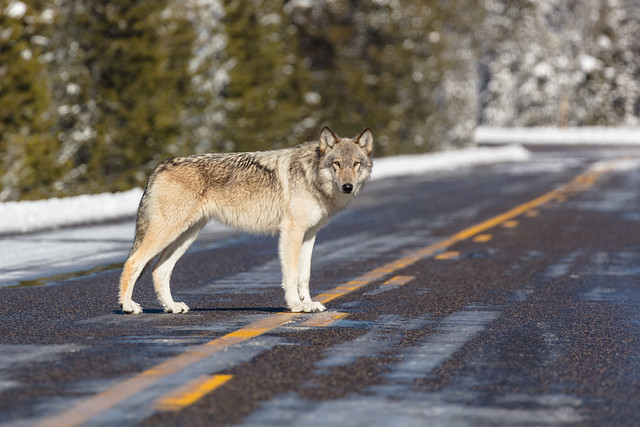First appeared on buckrail.com
JACKSON HOLE, WYO – Recent news proclaiming a notable decline in the number of gray wolves in Yellowstone National Park and beyond has caused concern among the animal’s supporters, but the park’s top biologist says there’s no reason to sound the alarm just yet.
Doug Smith has led the Wolf Restoration Project at Yellowstone since its inception in 1994. He says populations fluctuate for various reasons, but admits their numbers are currently about half of what they used to be.
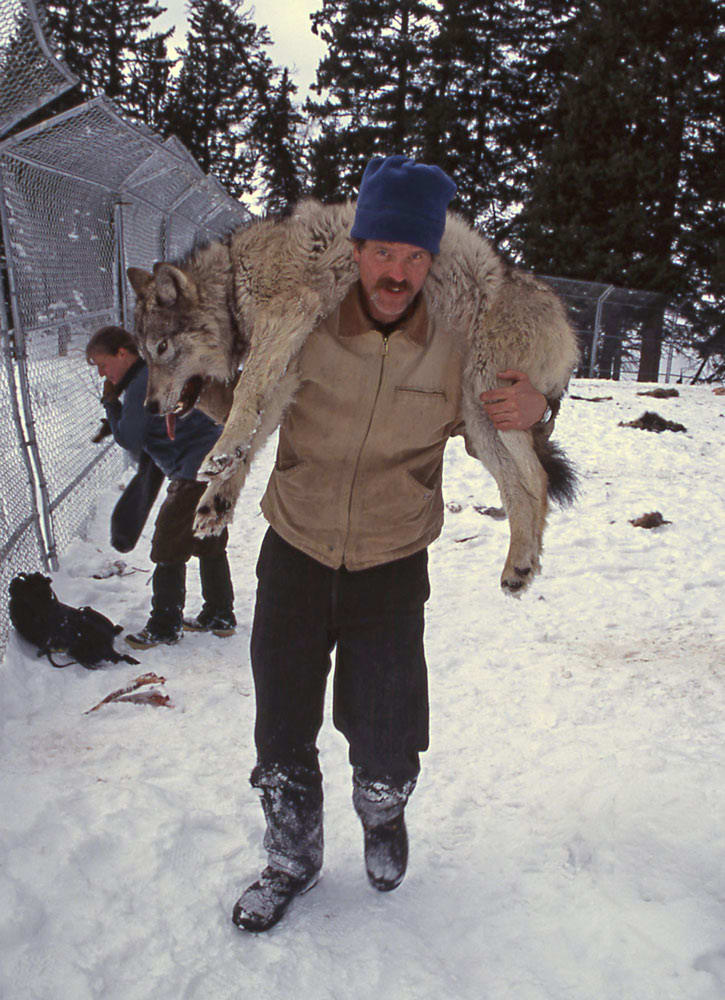
Doug Smith carrying a tranquilized wolf in the Rose Creek Pen, February 1997. (Jim Peaco, NPS)
“Our high point was 174 wolves in 2003, and last year’s count was 80. Just because of accounting issues, it could have been 90, but that is still a decline,” Smith said, referring to a pack of 10 wolves that left the park’s perimeters to the south and showed up in the state’s count. “The [decline] is primarily due to wolves equilibrating with their food source.”
Studies have shown wolves, coyotes, and most all wild animals adjust their population by some innate means not fully understood to available food sources. Simply put, in lean years where not much food or forage is available due to drought or other circumstances, wolves, for instance, will have smaller litters. Instead of 6 or 7 pups, a bitch may have 3 or 4, for example. Survival rates are also lower in tough times.
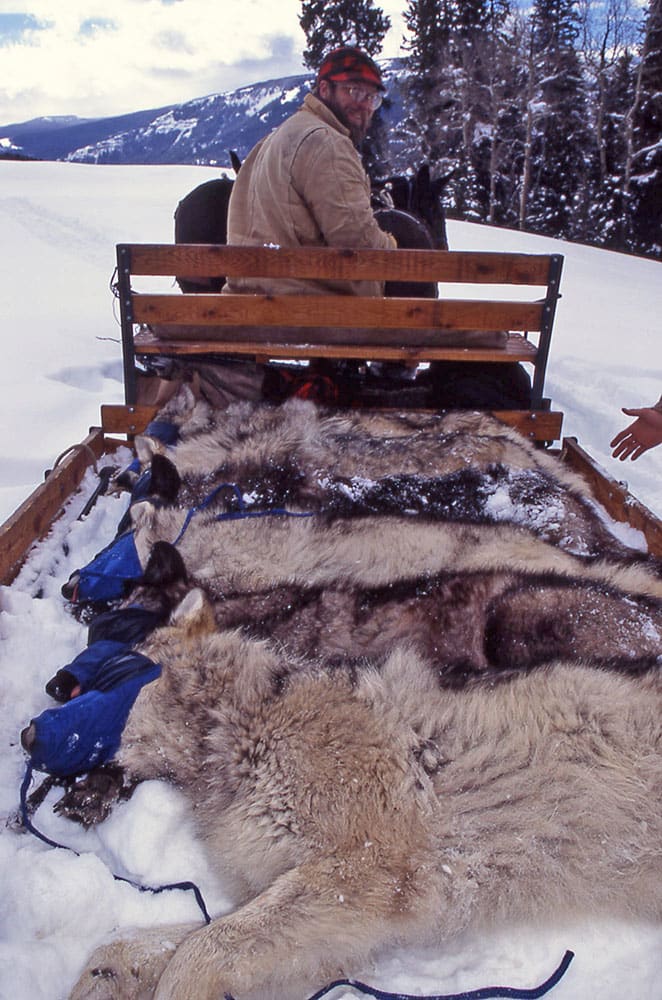
Ben Cunningham transporting Sawtooth pups, February 1997. (Jim Peaco, NPS)
Smith says wolf populations in Yellowstone have held steady at around 100 for the past decade. Wolves continue to be an extremely controversial topic in Wyoming, especially for ranchers and elk hunters. In 2018, 80 wolves were killed by hunters, and an additional 50 wolves were put down by federal and state agencies due to conflicts with people.
But the leading natural cause of death for wolves is other wolves. Smith says protected wolves in Yellowstone still have a 20-percent mortality rate because they are fiercely territorial. He adds wolves compensate for high death rates by breeding when they are young, and producing large litters.
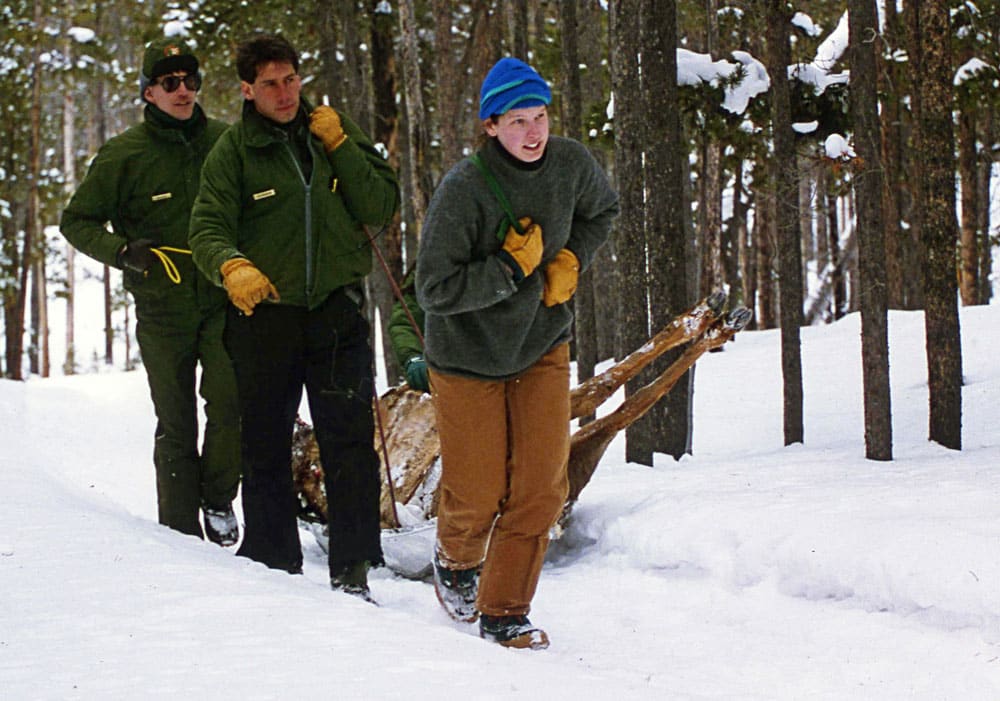
Park staff hauling elk carcass to Nez Perce Pen. January 1996. (Jim Peaco, NPS)
“But that’s an outgrowth of them living for millions of years at a high death rate. And so, 80 percent chance of survival for one more year sounds bad—but for them, it’s kind of normal,” Smith said.
Yellowstone doesn’t have a specific target population for wolves, and it’s Park Service policy to allow nature to take its course. But Smith says excessive human-caused mortality is considered unnatural. Smith also addressed the elephant in the room, warning advocates for getting rid of wolves risk messing with the region’s economy.
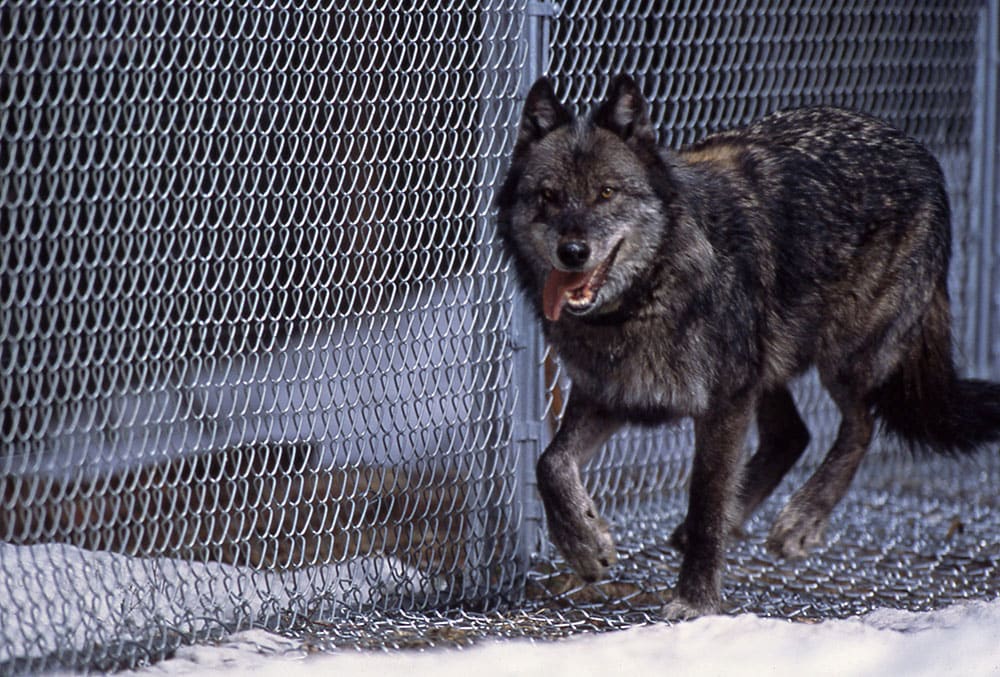
Wolf #9, the mother of the first pups, in the Rose Creek acclimation pen, 1995. (Barry O’Neill, NPS)
“Things like wolves, grizzly bears, and cougars is what makes this region unique. And it drives tourism, and tourism drives the economy,” Smith said. “You know, not many other places in the United States has those big carnivores, and Wyoming’s got ’em all.”

